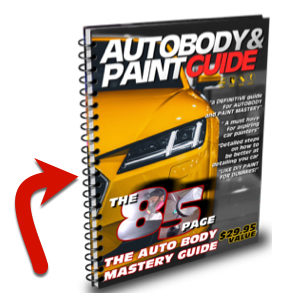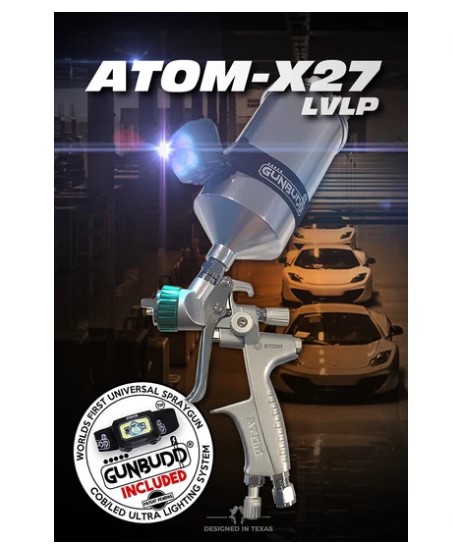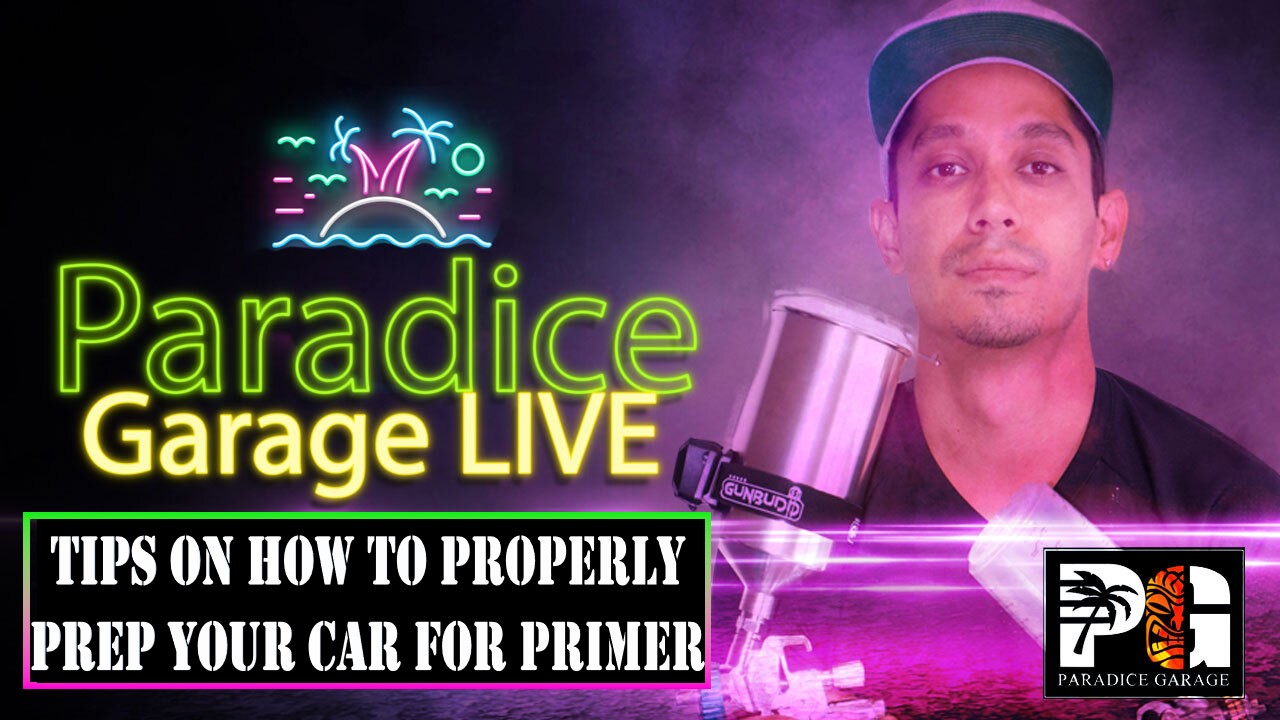Are you about to paint a car and are not sure how to prep it? Priming is an important step in the painting process, so it’s crucial to do it right. In this blog post, we’ll explain how to prepare your car for primer and offer some tips on what grit sandpaper to use, what type of primer to use, and more. Let’s get started! Get Free Auto Body Training Guides and Videos here and don’t forget to LIKE and SUBSCRIBE to my YT channel. Stay tuned for new videos coming out.
QUESTION: Is matte finish considered a primer also?
No, because if you’re getting a matte finished, you’re going to get a flattening agent that you put in your acrylic single-stage system or your base coat or your single-stage. Normally it’s single-stage that you put a flattener agent in it, and it just dries flat or satin.

That’s not really a primer. I don’t like flat jobs at all because it’s just not durable. If you gonna clean it, it scratches and you really can’t buff it out because there’s no clear coat on it.
So I think a matte finish is good for a show job if you’re just going to do it. Or if you’re doing like a Plasti Dip and it dries like a matte then that’s good. But remember that it’s not durable to scratches.
QUESTION: I molded a spoiler to a trunk using fiberglass but after 2 months the paint has cracks around where the bonding happened. What would be a better way to bond the two parts?
So if you’re using a plastic or fiberglass part spoiler to metal or to automotive fiberglass, plastic or metal, I would definitely use an Epoxy.
It’s Panel Bonding Adhesive, a 3M product and you can get it on eBay or Amazon, and you need a special gun for it. I think the gun alone is like 60 bucks, but you can buy the whole kit for like 100 bucks or I believe 120, really worth it.
I’ve done tons of body kit molds with this stuff and it sticks really good. You might want to check that out Panel Bonding Adhesive by 3M. It’s 08116 Panel Bonding Adhesive, you can go from metal to plastic, plastic to fiberglass, metal to fiberglass.

QUESTION: Do you use wax and grease remover on plastic or urethane bumpers before you prime?
Yes, absolutely you could do that. But if you’re spraying over raw plastic, I would definitely recommend you pick up a can of Bulldog Adhesion Promoter Aerosol, just shake it. You just missed dust the raw plastic with it, not a lot, you just want to miss it on. It’s going to have like a little glossy coating that dries matte and then you could put your primer on top of that.
You could even shortcut if you want to and if you just want to get the job out the door you could paint right over it. And you could put a base coat right this overall plastic if you want to. But if it’s a sentimental build or an expensive job that you’re doing, customers paying you good money, I would do this. I would put a 2k filler primer on top of it if you want to cut out the plastic texture because a lot of bumper covers raw plastic got a texture.
So wet sand with 400 grit -scuff it – adhesion promoter – 2K filler prime – wet sand 400. – and it’ll be like glass when done painting. You won’t have this texture to it so that’s the other option.
QUESTION: Etching primer or epoxy primer after etching agent on old MGB sanded to metal?
Definitely, the Epoxy primer. Epoxy primer is better than an Etching primer. So use a good Epoxy primer, and then after you spray your epoxy primer, you don’t have to sand it. If you let that flash for about an hour or two, you have a window or three within the same day, but you could prime to 2k filler primer over it an hour after your epoxy primer settles and dries. And our flash time basically.
QUESTION: Can you spray primer out of a 1.3 or 1.4?
Absolutely, you can and I used to say this, over 10 years ago and some of my older YouTube videos. The only thing is if you’re spraying a 2k filler primer out of a 1.3 to 1.4 you’re gonna want to reduce it 10 to 15% make it thinner, so it comes out of that nozzle size, and just give it a couple of extra coats. Because it’s thinned out, you want to give it an extra few coats to get the fill. But normally, if you’re spraying 2K filler primer, raw, just mixed ready to go, you want to be spraying out of 1.8 to 2.0 tip size in general.
But again, for many years, I had one spray gun that I used to use. I had a 1.4, I used it for all my base coat, clear coat, and for my priming everything. The number one thing guys are keeping your spray guns clean. If you keep your spray guns clean, and you take care of them they will last a long time.
The number one reason for spray gun malfunctions and failure is that you guys don’t keep them clean. If you guys wait for the primer cakes up and once primer gets harder in your gun like that, it’s hard to get back to brand new clean again. So it’s best after you’re done with your painting, your base coat, everything, clean it out really well. Hopefully, that helps.

QUESTION: What grit for final sanding on spraying epoxy primer?
You could finish off with 150 – 180 grit. Put a nice Epoxy on top of that or a 2k filler primer directly over it or DTM filler primer. You could sand your panel with 150 – 180 or you can go even 220. Finer is good as well, doesn’t have to be that coarse. Some people do spray filler over 80 but if I’m doing bodywork and I’m shaping with 80 grit (80 grit is the main grit we use for shaping). Getting the dents filled, shaping all done and then from there I like to hit it with 220 grit, smoothen it out a little more with 220 – 240 or whatever sandpaper I have. Then after that I will fill it with a 2k filler primer or DTM primer.
–
–
–TONY
For more helpful links:
Recommended PSI Settings For Spraying Primer, Basecoat, and Clear || Autobody Q&A
How To Prep and Spray EPOXY PRIMER Over Aluminum Rims and Steel Parts🏍😎
DO THIS! Spraying CAKED UP 2K Primer on RAW Plastic and Epoxy Primer
Can You 2k Filler Primer Over Small Bare Metal Spots
$25 Spray Gun VS Mid Grade $150 Spray Gun – Spraying 2k Filler Primer + Golden Paint Tips!
